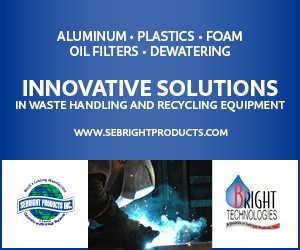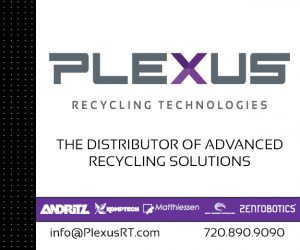 Is achieving a circular economy realistic?
Is achieving a circular economy realistic?
“Yes!” was my immediate response to this question in a recent interview. I have been writing reports, including Packaging Towards a Circular Economy: Addressing Today’s Top Packaging Challenges, and giving guest lectures on the very topic for the past 18 months. It would seem counterproductive should all the global efforts toward a circular economy to date be inconsequential.
But given today’s concerns over international import restrictions on recyclable materials and lackluster political leadership, it is not surprising to hear skepticism. Furthermore, the debate between the approach of either a circular economy or sustainable materials management (SMM) approach can still be heard. In my opinion, it is an outdated argument. As the effects of climate change are increasingly felt, there is no time to waste on semantics.
There is a tendency to get stuck on what it means to achieve packaging sustainability. The circular economy for packaging is about mindful and purposeful design, and it is very much complementary to SMM. Whether prioritizing carbon footprint reduction during your production process or selecting materials for your products that are more likely to be recycled, the sustainability journey isn’t over until all trade-offs can be managed and reconciled.
In the circular economy model, there is no defined path to achieve circularity. Trying to achieve sustainability targets, no matter what your current priority may be, is still a step in the right direction. The biggest challenge when adopting the circular economy is that it requires long-term thinking and a willingness to collaborate. In today’s fast-paced, competitive environment, this can be very difficult to conceive.
Questions from companies and consumers
In the past year, major corporations have announced significant packaging sustainability goals.
Just in the past month, for instance, McDonald’s announced that it aims to make all its packaging recyclable by 2025 and Coca-Cola Co. pledged to recycle a used bottle or can for every one the company sells by 2030.
Such efforts from brand owners, however, regularly get slowed down by the complexities of collection infrastructure. “It depends” is the answer we hear too often when responding to the question of whether a certain package can be recycled
This is a challenge that the entire packaging value chain must address.
Members of PAC, which include organizations such as McDonald’s and Coca-Cola, expressed a need for clear and simple guidance on their packaging’s ability to be recovered within the context of a circular economy. Under the PAC NEXT initiative, PAC created the Top 10 Packaging Challenges For Recycling in a Material Recovery Facility (MRF) report in 2014 to provide industry guidelines on what can and cannot be easily recycled. PAC revamped the “Top 10” report to produce individual fact sheets for 15 different formats and to accommodate other recovery options, such as composting, as a means to eliminate waste. The solutions-focused fact sheets provide recommendations and tangible steps toward packaging “circularity” and reflect PAC’s goal to bridge the communication gap and promote collaboration between stakeholders along the packaging value chain.
It’s also important to understand that concerns from the public about the recyclability or compostability of packaging are heard either by the brand owner (“Why can’t I recycle your packaging in my region?”) or by the local municipality (“The packaging says ‘recyclable’ so why don’t you accept it?”).
Finding solutions that can allow residents to divert material where and when they want to requires a multifaceted approach. For example, black plastic containers may be redesigned to use another color, but advancements in sorting technologies can also help to increase the capture rate of this material at a MRF. Successful recovery of packaging also requires stable end markets, legislative support, and engagement with consumers.
PAC’s packaging fact sheets identify key details on these impact areas.
Are you ready for change?
New and revised policies to address environmental issues are driving industry response. While new corporate packaging sustainability goals were announced this past month in the wake of the World Economic Forum, the U.K. launched its 25-year environmental plan with focus on single-use plastic packaging, California amended Senate Bill-168 to request an extended producer responsibility program to replace the current beverage container recycling program, and comments were due for Ontario’s amended Blue Box Program Plan and proposed Food & Organic Waste Framework.
These events did not happen by coincidence. The pressure is on – industry leaders who are able to anticipate policy changes and incorporate the circular economy into their business models will stand out from the laggards in time.
Industry stakeholders must have a willingness to collaborate and be prepared to make long-term investments in order to take the lead. There are many challenges ahead to align the interests of government, industry and the public, as it will take a concerted effort to re-work a system that has been in place for years.
However, the momentum is building with each new corporate policy, with each new passing legislation, with each new sorting or processing technology, and with each new packaging innovation.

Rachel Morier, PacNext
Rachel Morier is director of sustainability for PAC Packaging Consortium. She can be reached at [email protected].
The views and opinions expressed are those of the author and do not imply endorsement by Resource Recycling, Inc. If you have a subject you wish to cover in an op-ed, please send a short proposal to [email protected] for consideration.
Top photo credit: Eziutka/Shutterstock



